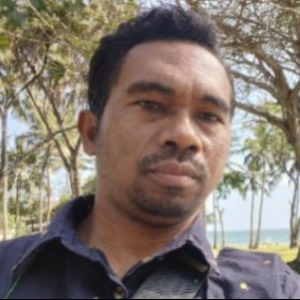Title : Assessment of the distribution and use of tamarind trees in Southwestern Madagascar, for sustainable utilization
Abstract:
The multipurpose tamarind tree (Tamarindus indica L.) plays a vital role in the livelihoods of local communities in the Mahafaly region, southwest of Madagascar; where it is also considered sacred. Despite its cultural significance, the species is increasingly threatened by charcoal production and slash and burn agriculture. This study assessed the distribution of tamarind trees, changes in biomass, and the role of traditional taboos in conservation efforts. Semi-structured interviews were conducted with 63 individuals across 10 villages to document local uses of the tamarind tree. Field surveys were conducted on 10 locally felled tamarind trees to measure diameter at breast height (DBH), height, wood volume, and biomass. In addition, 318 standing trees were inventoried in six villages. High-resolution satellite imagery from 2004/2005, 2012, and 2022 was used to analyze crown areas within a 4 km × 4 km area across the six villages. Allometric equations were developed to estimate biomass from DBH, wood volume and crown surface. As results, tamarind trees are primarily used for food, traditional ceremonies, charcoal production and traditional medicine in the intervening area. The tree density ranged from 0.06 to 0.35 trees/ha. Between 2004 and 2022, biomass losses of 15% to 92% were recorded. The sacred status of the tree alone appears insufficient for its protection in the Mahafaly region. To promote the sustainable use of the tamarind tree, alongside respecting local cultural taboos associated with it, the economic valorization of its fruits could provide income generating opportunities for local communities and offer a viable long-term solution. Reducing the demand for charcoal in surrounding areas and major cities could also help limit the cutting of tamarind trees in the region.


